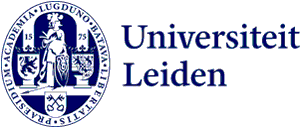
Michaël Peyrot appointed professor: 'We have a bright future ahead of us'
Michaël Peyrot has been appointed professor of Comparative Indo-European Linguistics at the Leiden University Centre for Linguistics with retroactive effect from 1 January. He is looking forward to passing on his love for the subject to a new generation of students.
Almost all European languages can be traced back to a common ancestor spoken in prehistoric times. This so-called ‘protolanguage’ is called Proto-Indo-European. By comparing related languages, scientists are trying to find out exactly what the protolanguage was like. Peyrot's chair covers the entire study of Indo-European, and he himself specialises in Tocharian. This extinct language was originally spoken in what is now Northwestern China. 'The challenge of Tocharian lies in the fact that many texts have yet to be deciphered. So there is still a lot of hard work to be done before we really know what the words mean,’ Peyrot says.
Tradition and progress
He is excited to take on this challenge. 'Leiden University has a long tradition in the study of Indo-European. It is a very broad field with different languages and specialisations. Fortunately, I don't have to be able to do everything myself. We have a very strong team of excellent specialists in different fields: Lucien van Beek, Alwin Kloekhorst, Guus Kroonen and Tijmen Pronk for Greek, Anatolian, Germanic and Slavic, among others,' says Peyrot. 'I feel privileged to be part of the Leiden team of Indo-Europeanists. I’m really looking forward to this job and I think we have a bright future ahead of us.'
For example, recent scientific developments are providing additional impetus in the field. 'Thanks to enormous advances in the analysis of archaeological DNA, we know more and more about prehistory and the people who lived in Europe and Eurasia at the time of Proto-Indo-European. We can therefore say with increasing accuracy what the living environment of those speakers was like and test those insights against hypotheses from comparative linguistics,’ Peyrot explains. 'Fortunately, many ideas about the distribution of Indo-European languages are now being confirmed by findings from archaeological DNA research.'
Passing on love
He enjoys sharing those new insights with his students. 'I look forward to passing on the love for the profession to a new generation of students,' Peyrot says. According to him, a good comparative linguist not only has to know Indo-European languages well but also needs a good command of the historical-comparative method. 'That's why it’s always something of a balancing act for comparative linguists. You have to delve deep into a language to build up the necessary knowledge, but at the same time you also have to see the broad outlines between different languages to arrive at reconstructions. It's important to be able to convey that well.’
ERC Consolidator Grant
Peyrot also does a lot of project research. His new project ‘The Silk Road Language Web’ will start in April 2024. He is investigating how peoples in what is now Northwestern China influenced each other's languages fifteen hundred years ago. He recently received an ERC grant of almost two million euros to carry out this research. ‘I’m going to be looking at the contacts of Tocharian with other Indo-European languages in Northwestern China,' he says. 'By properly analysing the influences between the languages, you can reconstruct their common prehistory and roll the contacts between them back in time, as it were. You can see which speakers arrived first and which speakers must have had influence only later. So we can reconstruct which side people came from and when,’ Peyrot explained in an earlier interview.
